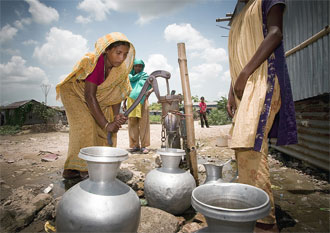Quezon City has been declared the pilot area for the country’s urban aquaculture project, dubbed as “Pangisdaan sa Bakuran.”
The project involves the culturing of the fast-growing Pangasius catfish in the backyards of urban poor homes to enable the participating families to raise a total of 180 fishes in 90 days.
The Pangasius can be cultured in six plastic drums arranged like a three-tiered pyramid, which can be placed in a backyard as small as five meters long and four meters wide.
Mayor Feliciano Belmonte Jr. has launched the project at the Barangay Paligsahan Hall in District 4 by awarding Pangasius fingerlings to families from depressed areas in the city.
“This is now a part of the city’s poverty reduction effort, specifically aimed at mitigating the impact of rising prices of commodities,” said Dr. La Rainne Abad-Sarmiento, chair of the city’s Anti-poverty Integration Task Force (APITF) and head of the city’s Sikap Buhay Entrepreneurship and Cooperatives Office (SB ECO).
The project is a partnership between the Quezon City government, through the APITF, and the Bureau of Fisheries and Aquatic Resources, the Angel Club Multi-purpose Cooperative, Vitarich Corp. and the A & L Fish Hatcheries, Inc., according to Sarmiento.





